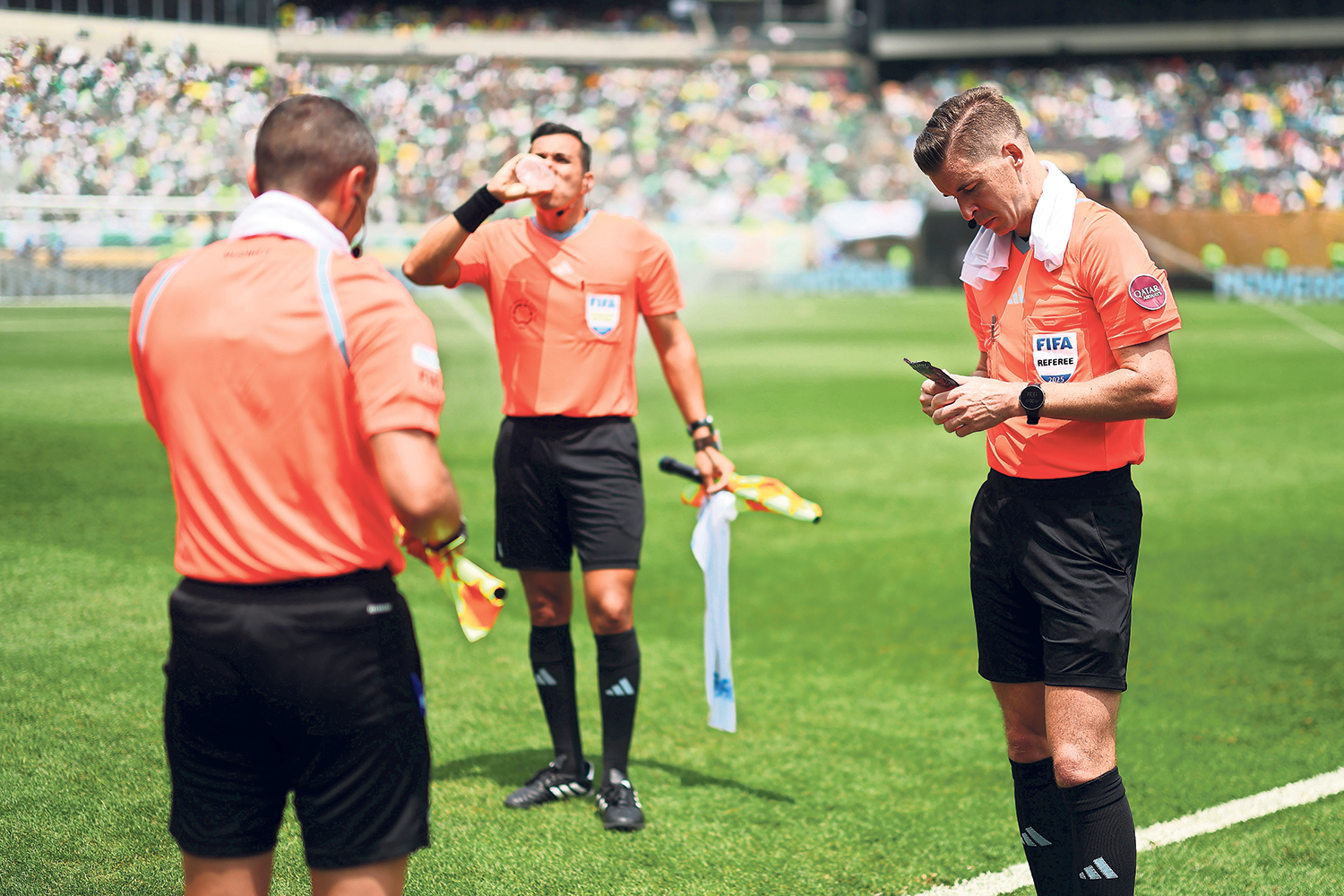Of course they had Michael Buffer. Fifa has done all it can over the last month to bestow the (sort of) inaugural Club World Cup with a sense of occasion, and nobody conveys main event energy quite like the most famous ring announcer on the planet. Buffer, now 80, still generates a Pavlovian response: the mere act of seeing him is an indication that it is, on a global level, time to get ready to rumble.
Recruiting him to welcome the players on to the field before the semi-finals, then, must have seemed a no-brainer. This is a new iteration of an old, and often overlooked, competition; Fifa has had no choice, really, but to pull out all of the stops to try to infuse it with meaning. That is why the trophy is so large, so golden, and the prize pot so rich at $1 billion, the staging so deliberately overblown.
It is too early to say whether that approach has worked or not. For all the worries about attendance, all the embarrassment of sparse crowds and weather delays, the tournament has gone about as well as a beta test could.
The performance of Brazil’s teams, in particular, has been proof of concept. Al-Hilal, a Saudi Arabian side, provided the competition’s greatest shock; Monterrey, of Mexico, one of its dramatic high points. The final is the sort that meets Gianni Infantino’s requirements perfectly: it will see either Luis Enrique’s breathtaking Paris Saint-Germain team or Chelsea, a Premier League giant, crowned world champions. Quite what that means, though, cannot yet be known. Chelsea currently do not have any plans in place for a victory parade on their return to London, preferring instead to allow their players a well-earned break. It is a decision which appears to place this tournament on a similar sort of level to the Conference League. That is not, of course, the sort of status Infantino had in mind.
In a way, that is completely fitting. Whether the Club World Cup has a viable future or not, it is hard to argue with the fact that it has served as a perfect snapshot of the current state of the game. It is entirely fitting that the final will be contested by one team owned by a private equity house and another that is backed by a nation state, the two models of ownership that have defined football’s high-wire economics. Infantino has created a competition that represents modern football in its purest form, the game distilled into its very essence.
This is a tournament, after all, that has been indirectly bankrolled by Saudi Arabia: the country’s sovereign wealth fund – which also owns Newcastle United and Al-Hilal – took a billion-dollar stake in Fifa’s official broadcast partner, Dazn, after it had paid the same for the rights to the Club World Cup and just a few weeks before the competition began.
It is one that has been held in the United States not so much out of a desire to grow the game here or even to iron out the kinks before next summer’s World Cup but because football – its clubs as much as its governing bodies – has long treated the country as a great fat cash cow.
It is one that has been hijacked for nakedly political ends. The trophy was unveiled in the Oval Office at Donald Trump’s White House; it is currently residing in Trump Tower, where Fifa announced this week it has decided to open an office. Four Juventus players were forced to stand behind the US president as he discussed the merits of air strikes on Iran. Trump will grace the final with his presence.
Most of all, it has risked the intrusion of the process dubbed “enshittification” by the writer Cory Doctorow into the world game. The tournament has not been without its merits. Some of the fixtures have been genuinely excellent. PSG’s dismantling of Real Madrid was an imperious, era-shifting performance.
The basic idea behind it has held. A world championship for clubs is the sort of thing that probably should exist. But the execution has felt rushed, as though it has been cobbled together by people who do not understand what they are selling. Staging games in the baking heat has given the players little choice but to conserve as much energy as they can.
“It is warm, and it is not easy to play,” as the Real Madrid goalkeeper Thibaut Courtois said. “If those games were played in the evening, it would be better for the spectacle. There would be more rhythm.” There has been little or no regard not just for player welfare – the Brazilian contingent are now facing the prospect of 70- or 80-game seasons – but for the quality of what we must, at this stage, regard as the product.
The fans, too, have too often been an afterthought. If there is a valid argument for staging games in larger stadiums than was strictly necessary – doing so allowed more people to attend than would have been possible in Major League Soccer’s smaller arenas – then the dynamic pricing model smacks of outright greed.
Those sparse crowds detracted from the spectacle, especially early on, just as much as asking exhausted players to run around in soaring temperatures. Too many games lacked noise or colour; to those sufficiently intrigued by the newfangled idea to watch at home, it served as an instant visual cue to downgrade the tournament’s significance. If it truly mattered, more people would be there.
This is, though, where we are now, in what increasingly looks like football’s end-of-empire phase: all the glitz and all the glamour but with little care for depth or substance or soul. This tournament, as Infantino has said, was designed to usher in a “new era” of club football, and perhaps, in time, it will. For now, though, it stands as a perfect monument to the game as it is: deracinated, decaffeinated, slowly decaying from sport into content.
Photograph by Carl Recine/Getty Images

